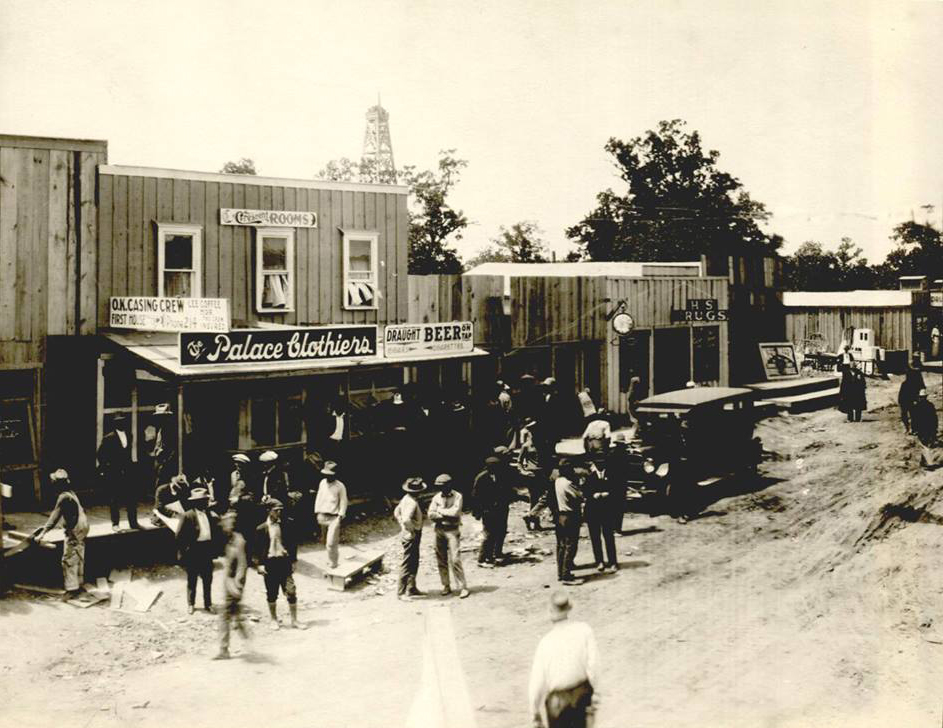CROMWELL.
Located in northeastern Seminole County, Cromwell is situated on State Highway 56, one mile south of State Highway 99A. Muskogee oilman Joe I. Cromwell bought land near the Bruner Number One oil well, in the Greater Seminole Field and platted the original township in 1923. The oil-boom town exploded to a population of thousands in a matter of weeks. A post office was established on May 17, 1924. The lawless community soon earned the nickname "Cromwell the Wicked," and legendary lawman William "Bill" Tilghman was asked to come out of retirement at age seventy to establish law and order.
During the 1920s approximately 150 businesses sold illegal moonshine whiskey and narcotics to the surrounding area. A drive to shut down these establishments caused the permanent closing of approximately seventy. However, the illegal drug trade was still embedded in the community because Wiley Lynn, a federal revenue agent, was linked to mobster Arnold Killian. Drugs were flown in from Mexico and dropped outside of town to be picked up and distributed by local moonshiners.
On November 1, 1924, Lynn, accompanied by brothel owner Rose Lutke, drove into Cromwell and parked across the street from Ma Murphy's dance hall and café. Lynn discharged his pistol in the middle of the street, bringing Tilghman and Deputy Hugh Sawyer out of the café. Tilghman grabbed Lynn's wrist and pressed his own handgun into Lynn's ribs. Tilghman instructed Sawyer to remove Lynn's gun. As soon as the gun was removed from Lynn's hand, Tilghman released his hold on him. Lynn then retrieved another handgun from his jacket pocket, fired, and mortally wounded Tilghman.
Shortly after Tilghman's death a fire burned the business district. With the oil boom declining, only a few legitimate businesses and churches were rebuilt to serve a surrounding agricultural community. In 1930 population stood at 249 and peaked at 451 in 1940. At the turn of the twenty-first century Cromwell had 265 residents, and in 2010 the number rose to 286. The Bill Tilghman Celebration was held annually on the second Saturday in October, and a marble marker in the city park commemorated the location where the lawman paid the ultimate price for Cromwell's citizens. In April 2020 the census reported 238 residents.
See Also
Bibliography
"Cromwell," Vertical File, Research Division, Oklahoma Historical Society, Oklahoma City.
Louise Welsh, Willa Mae Townes, and John W. Morris, A History of the Greater Seminole Oil Field (Oklahoma City: Oklahoma Heritage Association, 1981).
Wewoka (Oklahoma) Capital Democrat, 15 May 1924.
Citation
The following (as per The Chicago Manual of Style, 17th edition) is the preferred citation for articles:
Penny Veitenheimer, “Cromwell,” The Encyclopedia of Oklahoma History and Culture, https://www.okhistory.org/publications/enc/entry?entry=CR014.
Published January 15, 2010
Last updated
March 1, 2024
© Oklahoma Historical Society


